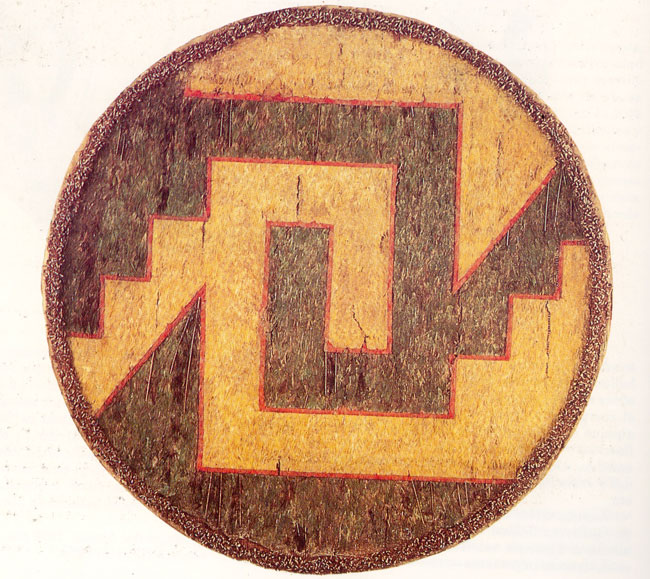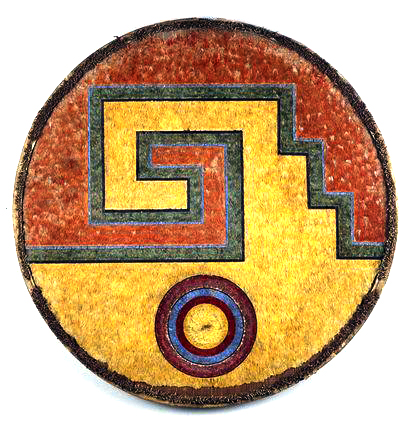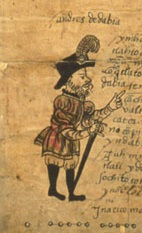- Feather Headdress
Location: Weltmuseum Wien – Vienna, Austria
Probably the most iconic piece of Aztec history in existence, this incredible green quetzal-feather headdress is majestic, even 500 years after its manufacture. Made in 1515, and was made using materials from across the empire, including hundreds of green quetzal feathers and thousands of gold buttons. Cortes took possession of it in Mexico during the conquest and quickly sent this piece back to Europe, possibly in the first shipment to Spain in July 1519. It’s next documented appearance is when it was catalogued in 1596 at the death of Ferdinand II, who had apparently received it from a relative, who had received it from Cortes. It remained in the Hapsburg family until it made it into academic hands in 1880. Mexico has made attempts to have the headdress returned but as of today it resides at the Weltsmuseum Wien in Vienna, Austria.
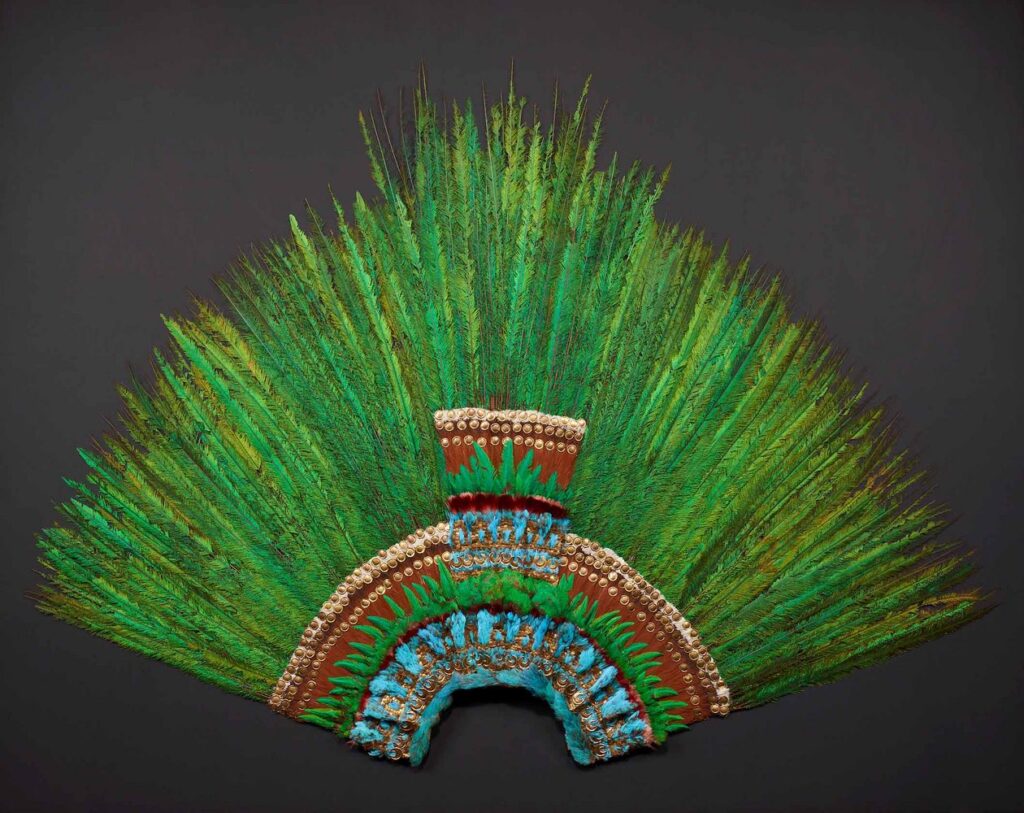
2. Ahuizotl Shield (Chimalli)
Location: Weltmuseum Wien – Vienna, Austria
One of four shields, or chimalli, to survive it is made of reed, rawhide, feathers, gold and plant-fiber yarn. It is called the Ahuizotl shield because of an association with the Aztec emperor of that name. This incredible artifact enters the historical record in 1522 as a gift from Cortes to the Bishop of Palencia, Pedro Ruiz de la Mota. A later bishop, Pedro de la Gasca, gifted it to Ferdinand I in the 1550s. From there it entered the Hapsburg Dynasty collection and became part of the legendary Ambras Collection cultivated by Ferdinand II at Ambras Castle in Innsbruck, Austria. In 1880 it was handed over to the Imperial Museum of Natural History. In 1928 it ended up in its current location at the Weltmuseum Wien in Vienna, Austria.
3. Feather Fan
Location: Weltmuseum Wien – Vienna, Austria
The year and origin of the fan are unknown. Determined to be post-contact. Listed in 1596 as a “large windmaker” in Ferdinand II’s Ambras collection, which included the headdress and Auhuizotl chimalli. And that butterfly in the center…
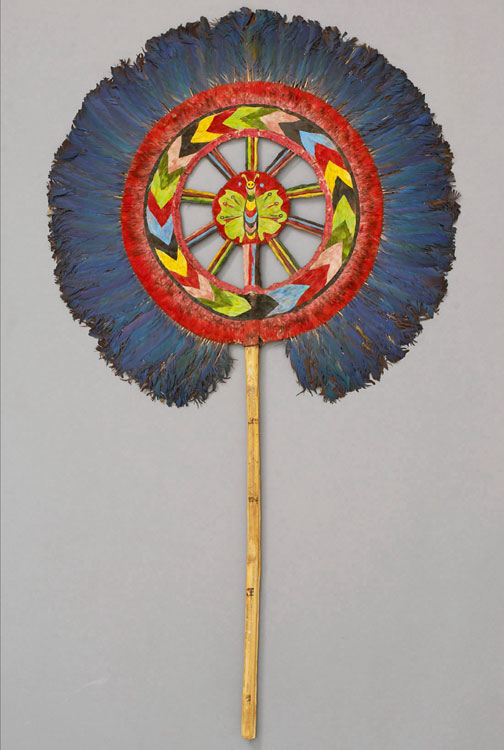
4. and 5.: The Stuttgart Shields
Location: Landesmuseum Wúrttemberg, Stuttgart
This pair of Aztec feathered shields, or chimalli, made their way to Europe in the 16th century landing in Stuttgart and the Wurtemburg Dynasty. Both chimallis were first recorded in a royal parade in 1599 in Stuttgart. Neither shield got far from there and both are now housed at the Landesmuseum Wurtemburg in Stuttgart, Germany. There are several documented shields taken by or gifted to Cortes during the conquest. Cortes, in a letter to Charles, writes he was given 24 golden shields with feathers. When the Spanish were housed in the Palace of Axayacatl in Tenochtitlan they stumbled upon the former king’s treasure stash, amongst which were more shields.
6. Chapultepec Shield (Chimalli)
Location: Museo Nacional de Historia, Mexico City
The chimalli must have been on the first shipment from Cortes’s expedition because the museum claims it arrived in Brussels in 1519 and remained in the Palace of Arms. In 1796 the chimalli made it to a collection in Vienna. It returned to Mexico in 1866 with Maximilian I and his ill-fated bid to rule Mexico. This chimalli is in bad shape and not visible to the public. With much of the jaguar skin gone, missing gold, feathers decomposing and fibers disintegrating it is a challenge for conservationists.
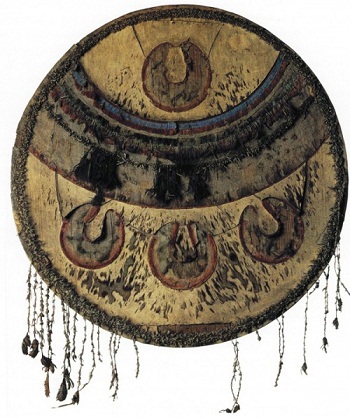
7. Feather-covered leather piece
Location: Museo Nacional de Historia, Mexico City
This piece is considered post-contact but done in the traditional style of the Aztec feather artisans called amantecas. Academics estimate it to have been made around 1540. At some point it made its way into the lining of a container for an old chalice used by the Franciscan friars, according to ethnohistorian Rafael Garcia Granados. The brightly colored blue and yellow feathered leather mat was acquired in the state of Hidalgo and officially published by Grandaos in 1939. The blue water design has been suggested to represent Tlaloc or some fusion of Christian and Aztec imagery.
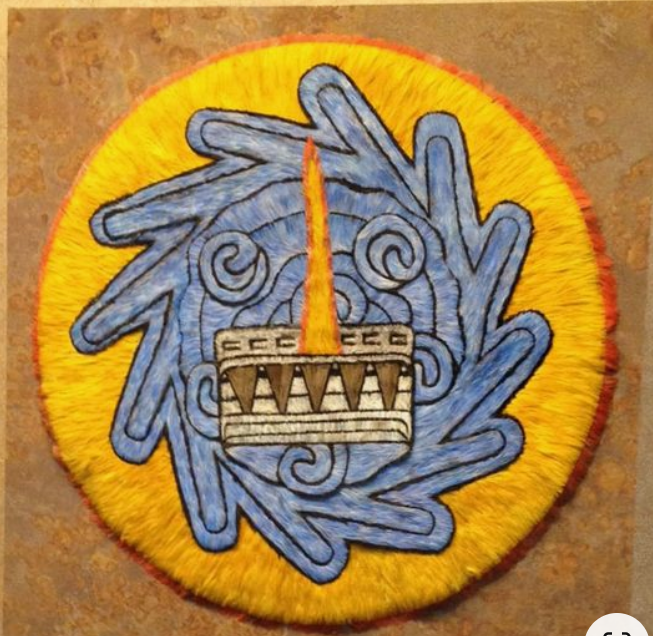
UPDATE: It was brought to my attention that the amenteca continued to work for many years on Christian-themed works of art. Check that out as well.



